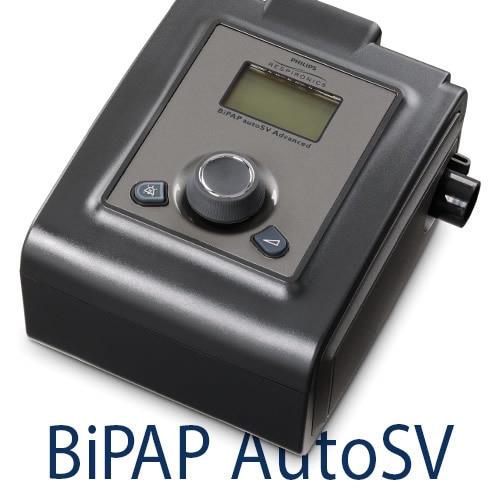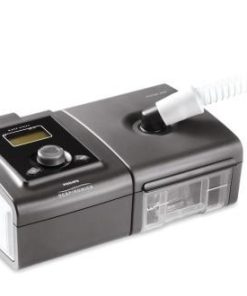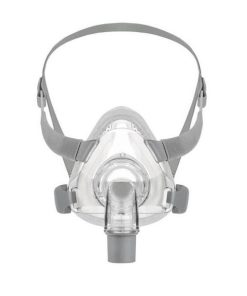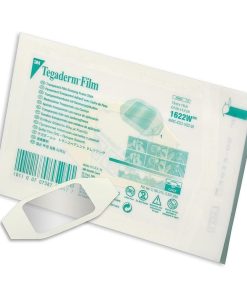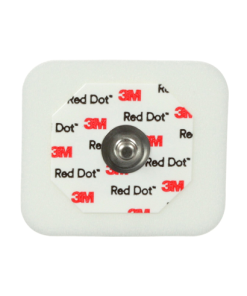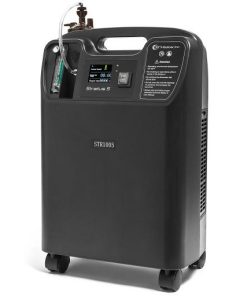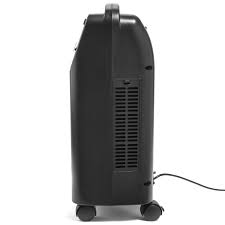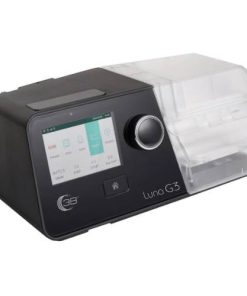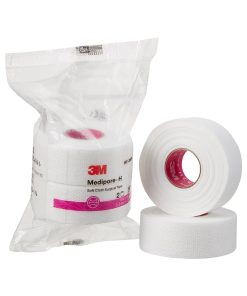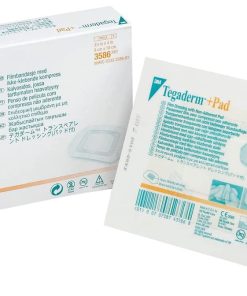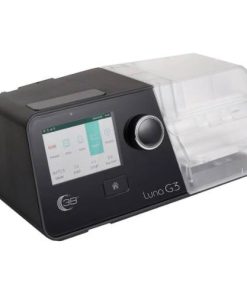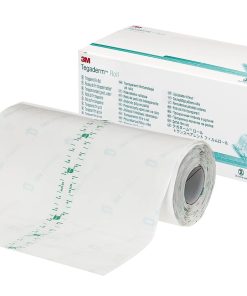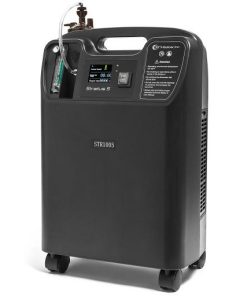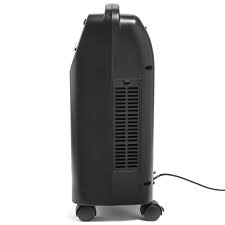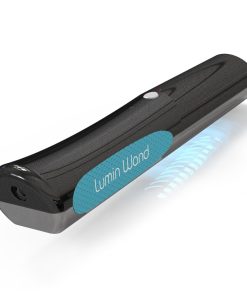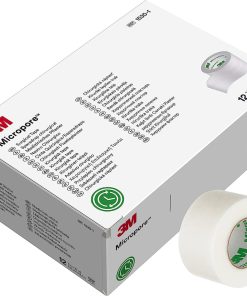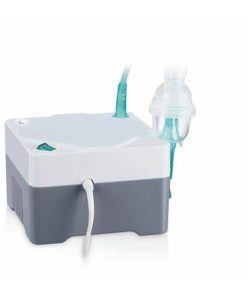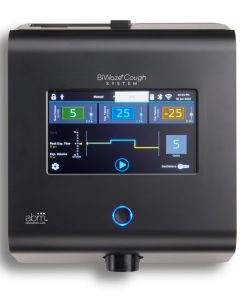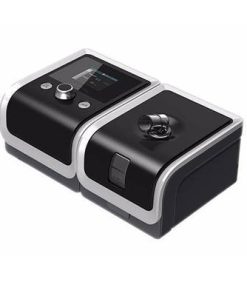Philips Respironics System One DS960 REMstar AutoSV BiPAP – CERTIFIED PRE-OWNED Philips Respironics
$ 2.199,00 $ 549,75
Advanced Comfort BiPAP for Exceptional Performance
System Overview
The BiPAP autoSV Advanced System One with heated humidifier device is intended to augment your breathing by supplying pressurized air through a circuit. It senses the your breathing effort by monitoring airflow in the circuit and adjusts its output to assist in inhalation and exhalation. This therapy is known as Bi-level ventilation. Bi-level ventilation provides a higher pressure, known as IPAP (Inspiratory Positive Airway Pressure), when you inhale, and a lower pressure, known as EPAP (Expiratory Positive Airway Pressure), when you exhale. The higher pressure makes it easier for you to inhale, and the lower pressure makes it easier for you to exhale.
When prescribed, the device can also provide features to help make your therapy more comfortable. The ramp function allows you to lower the pressure when trying to fall asleep. The air pressure will gradually increase until the prescription pressure is reached. Additionally, the Bi-Flex comfort feature provides increased pressure relief during the expiratory phase of breathing.
Available Therapy Features
Bi-Flex Comfort Feature
If enabled, the device provides a comfort feature called Bi-Flex. The Bi-Flex attribute adjusts therapy by inserting a small amount of pressure relief during the latter stages of inspiration and during active exhalation (the beginning part of exhalation). Bi-Flex levels of 1, 2, or 3 progressively reflect increased pressure relief that will take place at the end of inspiration and at the beginning of expiration.
Auto EPAP Technology
EPAP will distinguish your breathing patterns and determine the differences between obstructed apneas and apneas where your airway is clear. The Respironics PR System One 960DS has an auto titrating algorithm which allows for the device to operate like a typical Auto CPAP or an Auto BiPAP, adjusting to your breathing when needed to help maintain a clear airway.
Ramp
If enabled, the device is equipped with a linear ramp function. The Ramp feature will reduce the pressure and then gradually increase (ramp) the pressure to the prescription pressure setting so patients can fall asleep more comfortably.
Rise Time Comfort Feature
If enabled, the device provides a comfort feature called Rise Time. Rise time is the amount of time it takes the device to change from the expiratory pressure setting to the inspiratory pressure setting. Rise time levels of 0, 1, 2, or 3 progressively reflect slowed response of the pressure increase that will take place at the beginning of inspiration. A setting of 0 is the fastest rise time while a setting of 3 is the slowest. Providers should adjust the rise time to find the most comfortable setting for the patient. Rise time cannot be adjusted when Bi-Flex is enabled.
SV Algorithm
Servo Ventilation will provide a smooth breathing pattern by changing pressure when needed on a breath by breath basis. Your peak flow will be monitored throughout BiPAP use, and the SV Algorithm will support a stable breathing cycle.
Philips Respironics System One Resistance Control
Designed to attain your optimal pressure in the mask, resistance control will monitor the resistance on the mask and will automatically change the pressure settings at the mask that you receive a consistent pressure from the tube on the mask end.
Humidifier
Helping to increase your comfort during BiPAP therapy, a humidifier will help manage the rainout in your tube and mask. Consistent humidity will be delivered into the tube providing relieve at the mask. Rainout can cause irritation after sleep apnea therapy by allowing for excess moisture into the mouth or nose during use, resulting in side effects such as a sore throat or dry nose after undergoing BiPAP or CPAP therapy. There are three different levels of humidity available that you can choose from, allowing you to raise or lower your humidity dependent upon your daily needs due to the inclement weather in your room.
SD Card NOT Included
Recommended Replacement Schedule
| Full Face Mask | 1 every 3 months | The mask is the plastic portion of the interface. That part should be replaced every 3 months. The cushion part is different. The cushion inserts have to be replaced more often because of the contact with the face. They can be separated from the frame work and should be replaced once a month. |
| Nasal or Pillow Mask | 1 every 3 months | The mask is the plastic portion of the interface. That part should be replaced every 3 months. The cushion part is different. The cushion inserts or pillows have to be replaced more often because they touch the face. They can be separated from the frame work and should be replaced once a month. |
| Headgear | 1 every 6 months | CPAP mask headgear and chin straps may become stretched and lose their elasticity, leading to over-tightening and discomfort. They can also trap bacteria from sweat and moisture. |
| Tubing | 1 every 3 months | CPAP mask tubing may develop small holes or tears, which can cause air leaks. If your tube is leaking, you may not be receiving your prescribed therapy setting from your CPAP. This can cause you to feel like you’re not sleeping as well. |
| Chinstrap | 1 every 6 months | Chinstraps may become stretched and lose their elasticity, leading to over-tightening and discomfort. They can also trap bacteria from sweat and moisture. |
| Full Face Mask Cushion | 1 every month | Full face mask cushions cover more of your face and may deteriorate over time through regular wear and tear and cause leaks throughout treatment. Regular replacement is recommended for hygienic purposes and to ensure the best fit and most effective treatment. |
| Nasal Mask Cushion | 2 every month | Nasal mask cushions are in constant contact with your face and should be replaced consistently. Regular replacement is recommended for hygienic purposes and to ensure the best fit and most effective treatment. |
| Pillow Mask Pillows | 2 every month | Pillow masks are in constant contact with your face and the pillows sit inside your nose throughout the night. Regular replacement is recommended for hygienic purposes and to ensure the best fit and most effective treatment. |
| Heated Tubing | 1 every 3 months | CPAP mask tubing may develop small holes or tears, which can cause air leaks. If your tube is leaking, you may not be receiving your prescribed therapy setting from your CPAP. This can cause you to feel like you’re not sleeping as well. |
| Disposable Filters | 2 every month | CPAP device filters can wear out or become clogged over time, potentially exposing you to airborne particles, mold and bacteria. |
| Non-disposable Filters | 1 every 6 months | CPAP device filters can wear out or become clogged over time, potentially exposing you to airborne particles, mold and bacteria. |
| Humidifier Water Chamber | 1 every 6 months | CPAP humidifier water chambers may become discolored, cracked, cloudy or even pitted due to the mineral levels found in most tap and drinking water. As the material deteriorates, cracks may trap bacteria from moisture. |
| Mask Frame System | 1 every 3 months | The frame system is comprised of the mask frame and cushion. Due to being in close proximity to the face during treatment, frames should be regularly replaced. However, since not in direct contact, the frame system is only eligible for replacement every three months. |
| CPAP/BiPAP Machine | 1 every 5 years | A CPAP machine’s life span is typically 5 years. We recommend getting a backup CPAP machine, especially if your current machine is more than two years old. That way you’ll never be without your therapy, even if one of your devices requires maintenance. |
Fast shipping and professional packing
Due to our longstanding partnership with UPS FedEx DHL, and other major international carriers, we are able to provide a range of shipping options. Our warehouse staff are highly trained and will pack your goods in accordance with our exact and precise specifications. The goods you send us are checked thoroughly and securely secured prior to shipment. We ship to hundreds of thousands of customers daily across different countries. The fact that we are committed to becoming the biggest online retailer in the world is clear. The warehouses and centers of distribution are in Europe, as well as the USA.
Note: Orders with multiple items will have a different processing time for each item.
Before shipping, we will inspect the ordered items carefully before shipping. The majority of orders will be delivered within 48 hours. The delivery time will be between 3-7 days.
Returns
The stock is constantly changing and is not completely managed by us due to the involvement of several different parties, such as the factory and our warehouse. This means that the actual stock could alter at any time. Be aware that your order may be out of stock when the order is placed.
The policy is 30 days. We are unable to exchange or refund your order when it's been 30 days since the purchase.
In order for your item to be considered eligible for return, it must be unopened and in the same condition as when you received it. The item must be in the original packaging.
Related products
Full Face Mask
N95 Respirators & Masks
3M 6000 Half Face 4 Point Adjustable Reusable Respirator – Large 3M
N95 Respirators & Masks
3M 9010 Particulate Respirator N95 Mask One Size Fits Most 3M
Portable Oxygen Concentrator
Cough Assist
ABM Respiratory Care BiWaze Cough Assist System – Certified Pre-Owned ABM Respiratory Care
N95 Respirators & Masks
Oxygen Concentrator
3B Medical Stratus 5 Oxygen Concentrator – Certified Pre-Owned 3B Medical
Portable Oxygen Concentrator Accessory
N95 Respirators & Masks
N95 Respirators & Masks
3M Aura 9205+ N95 Particulate Respirator Mask, One Size Fits Most, White 3M
N95 Respirators & Masks
3M 8511 N95 Particulate Respirator Mask With Cool Flow Valve 3M
CPAP Tubing and Hoses
Hand Sanitizer
Portable Oxygen Concentrator
Oxygen Concentrator
N95 Respirators & Masks
Nebulizer Compressor
CPAP Machine

